It’s the Trail Genius’s favorite time of year — the psychedelic time when the prettiest of wildflowers, the spring ones, are carpeting the forest floor.
\Mini-hikes that used to take thirty minutes now take an hour plus, because you’re having to stop every five seconds to admire some jewel popping up through the dry leaves. These precious delights, which melt the hearts of us hard-bitten survivors of up-north winter, have but a narrow window to flourish before a canopy of leaves drowns out the sunlight in the forest and summer commences. Like everything in life, it’s a tradeoff. You get summer and swimming and boating, and you lose the trillium. Flowers teach us the wisdom of transience: everything is fleeting, nothing is permanent, and you’d best dwell on each blessing before it vanishes into the halls of time.
One way for me to feel like I’m grasping spring’s bounty is by knowing the names of things. Though “A rose by any other name would smell as sweet,” there’s satisfaction to be had in identifying flowers. By calling something by its name, you bring it closer to yourself. Plus you can impress your friends! I’m a dilettante, but I’m sometimes mistaken for a naturalist, merely because I can identify some highlights of wildlife I see on my hikes. The good news is it doesn’t take much to seem knowledgeable. This time of year, really all you need to know are around ten flower species, because those are the main ones you see.
For my wildflower adventure, I knew where I must go: Clay Cliffs, a Leelanau Conservancy hike with views of Lake Michigan and Lake Leelanau, which the Conservancy calls “the most prolific wildflower site in Leelanau County.” It’s a couple minutes’ drive north of Leland on M-22, and it’s the perfect way to get some exercise after devouring an enormous pretzel bread sandwich at the Village Cheese Shanty in historic Fish Town. Spring is generally one step ahead at Clay Cliffs, because of the moist soil. It’s lush before other places are.
Without further ado, here are snapshots of the Big Ten spring wildflowers you should know, with totally unscientific descriptions based on a layman’s casual observations.
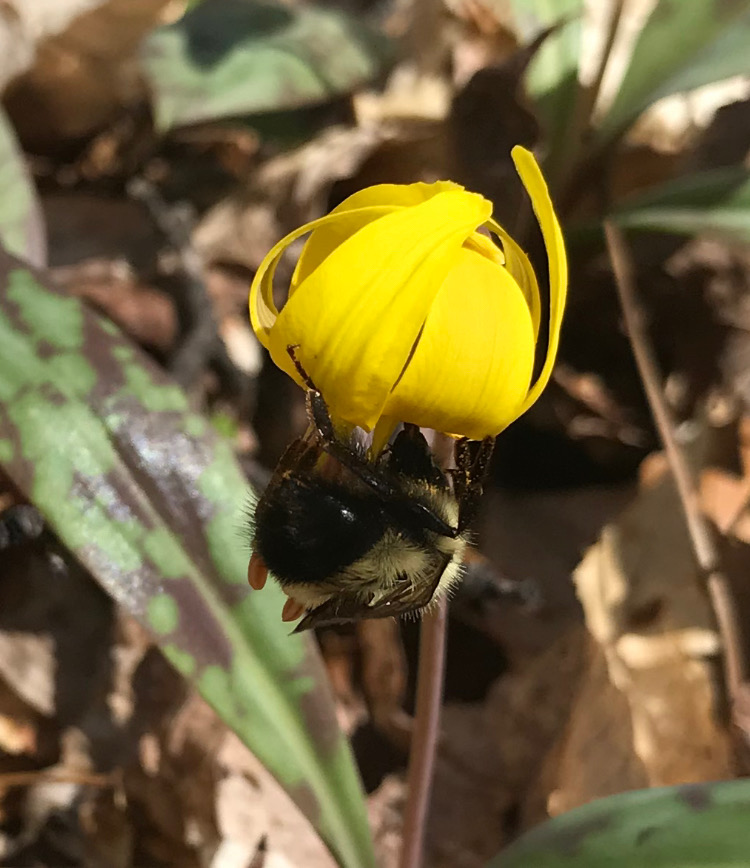 1. Trout lilies. Their young leaves, with military camouflage-like markings, look dusty and old, as though they’d been around through the winter. But touch them and you’ll realize they’re fresh. As they grow they become glossy and shiny, and an adorable downcast yellow flower rises up from them. When it’s ready to be pollinated, the flower’s petals curl back, signaling Come hither, Mr. Bee!
1. Trout lilies. Their young leaves, with military camouflage-like markings, look dusty and old, as though they’d been around through the winter. But touch them and you’ll realize they’re fresh. As they grow they become glossy and shiny, and an adorable downcast yellow flower rises up from them. When it’s ready to be pollinated, the flower’s petals curl back, signaling Come hither, Mr. Bee!
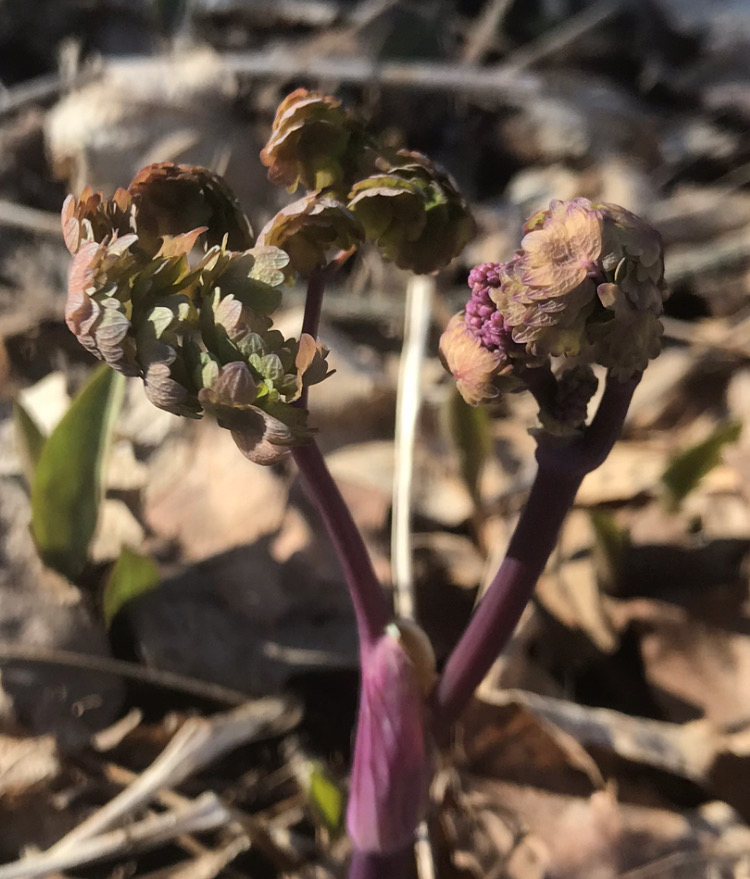 2. Meadow rue. Along with trout lilies, one of the earliest things you see in spring. Eventually they’ll produce pink or white flowers, but now they’re weird-looking and recall cabbage. I include them on this list, even though they’re not blooming yet, because you’ll see them everywhere and wonder what they are. You’re liable to mistake them for columbine (the leaves are very similar), as I did till recently.
2. Meadow rue. Along with trout lilies, one of the earliest things you see in spring. Eventually they’ll produce pink or white flowers, but now they’re weird-looking and recall cabbage. I include them on this list, even though they’re not blooming yet, because you’ll see them everywhere and wonder what they are. You’re liable to mistake them for columbine (the leaves are very similar), as I did till recently.
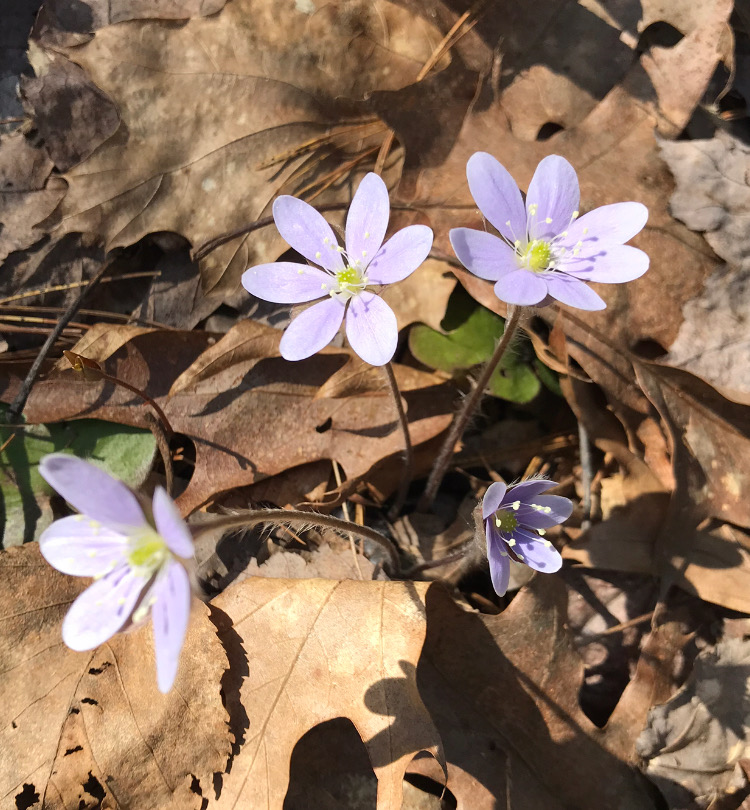 3. Hepatica. These might be my favorite. Their daisy-like innocence and shyness captures spring’s purity. At first they gaze downward, and then they pop open to greet the rays of sun. Their stems are fuzzy. The quintessential spring wildflower.
3. Hepatica. These might be my favorite. Their daisy-like innocence and shyness captures spring’s purity. At first they gaze downward, and then they pop open to greet the rays of sun. Their stems are fuzzy. The quintessential spring wildflower.
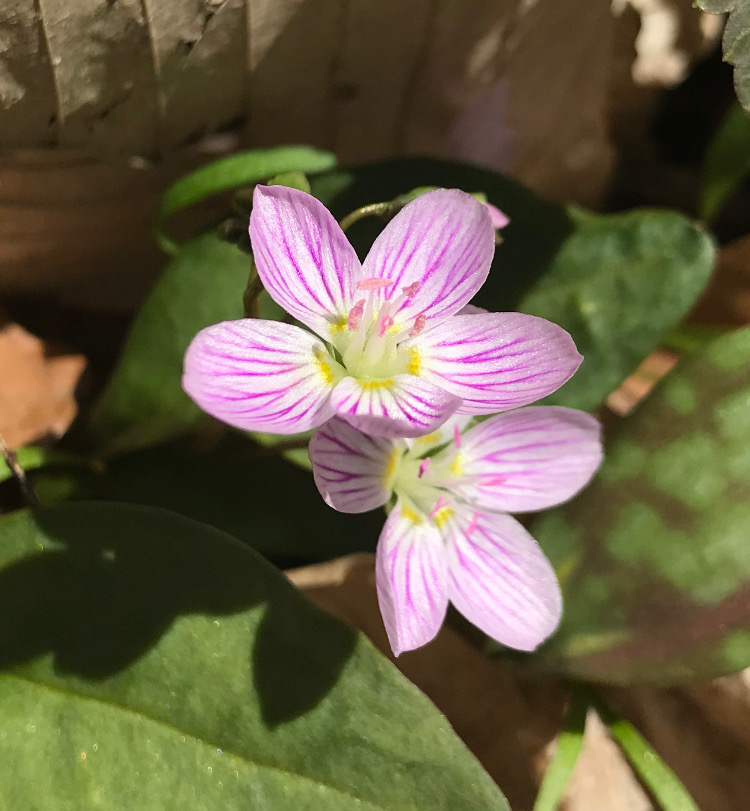 4. Spring beauties. Tiny yet fierce, with striking fuschia veins along their pale petals. The Trail Genius would forgive you if you chose these over hepatica as your favorite.
4. Spring beauties. Tiny yet fierce, with striking fuschia veins along their pale petals. The Trail Genius would forgive you if you chose these over hepatica as your favorite.
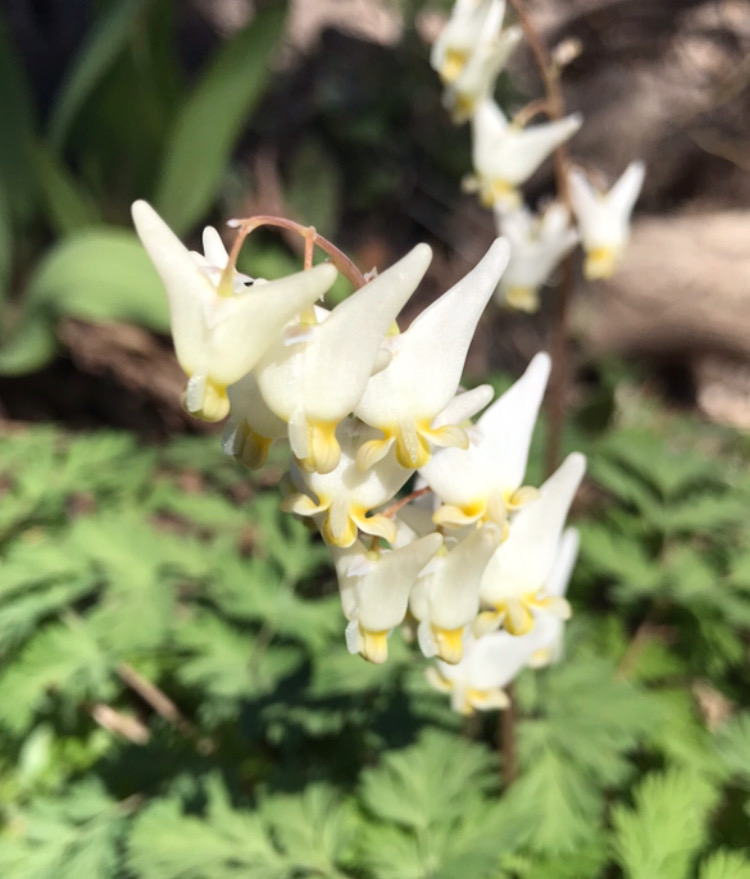 5. Dutchman’s breeches. Aptly named, they look like upside-down white pants hanging from a clothesline. You won’t have to search long and hard for these; they can dominate a forest.
5. Dutchman’s breeches. Aptly named, they look like upside-down white pants hanging from a clothesline. You won’t have to search long and hard for these; they can dominate a forest.
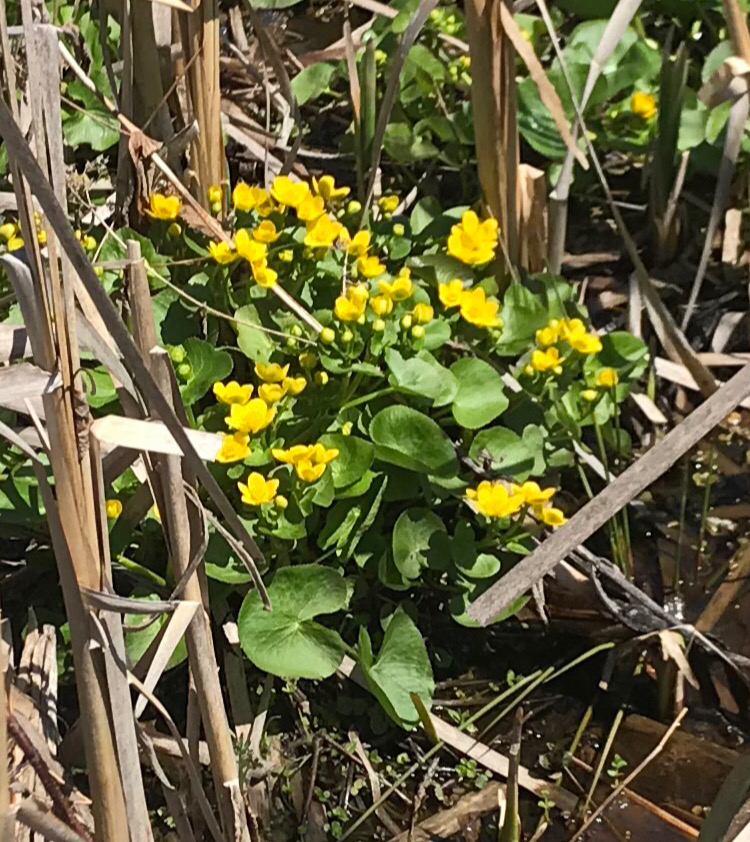 6. Marsh marigolds. Found in — you guessed it — wetland areas, these blazing yellow star-shaped flowers with lily-pad-like leaves have a storied history in literature, including in Shakespeare: “Winking Marybuds begin / To open their golden eyes…”
6. Marsh marigolds. Found in — you guessed it — wetland areas, these blazing yellow star-shaped flowers with lily-pad-like leaves have a storied history in literature, including in Shakespeare: “Winking Marybuds begin / To open their golden eyes…”
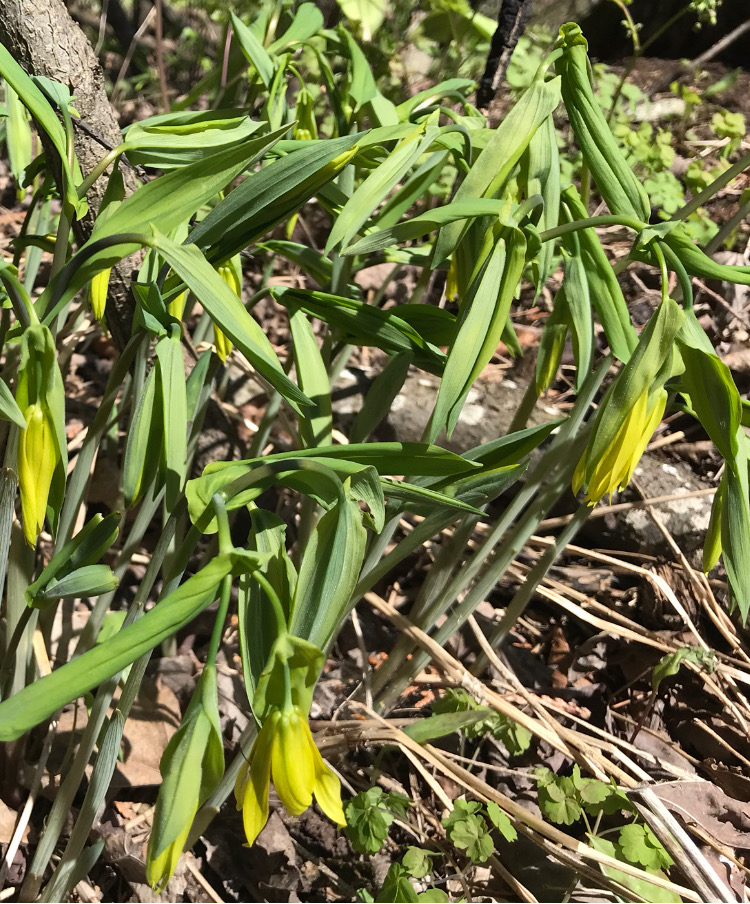 7. Bellworts. The underdog. I adore this ugly duckling of spring, with its tangled disheveled hot mess of corkscrewing leaves and droopy yellow flowers. Deer love them too.
7. Bellworts. The underdog. I adore this ugly duckling of spring, with its tangled disheveled hot mess of corkscrewing leaves and droopy yellow flowers. Deer love them too.
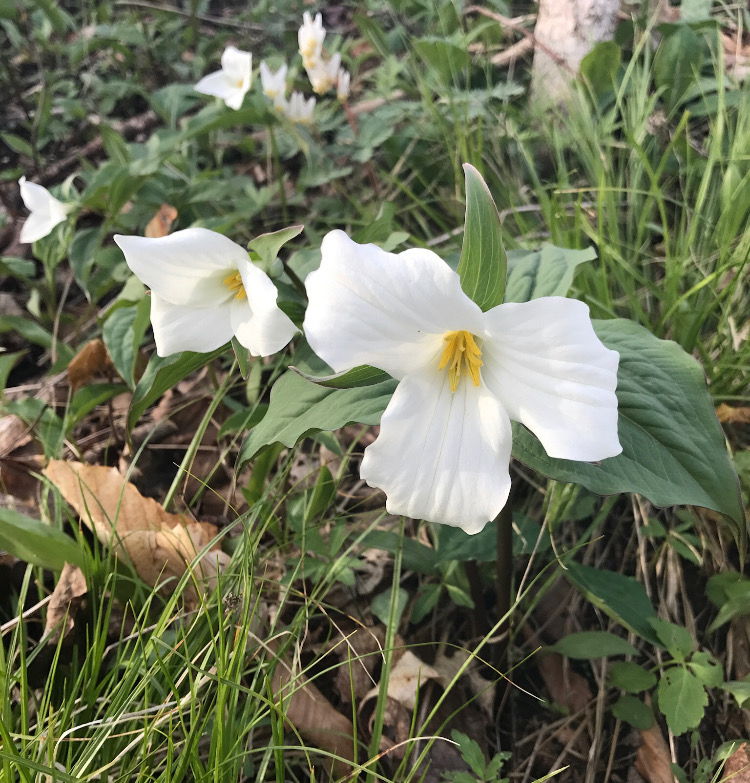 8. Trillium*. The prince, nay, the king of spring. Three leaves, three white petals. How do you describe a diamond? How do you put perfection into words? That’s all I dare say.
8. Trillium*. The prince, nay, the king of spring. Three leaves, three white petals. How do you describe a diamond? How do you put perfection into words? That’s all I dare say.
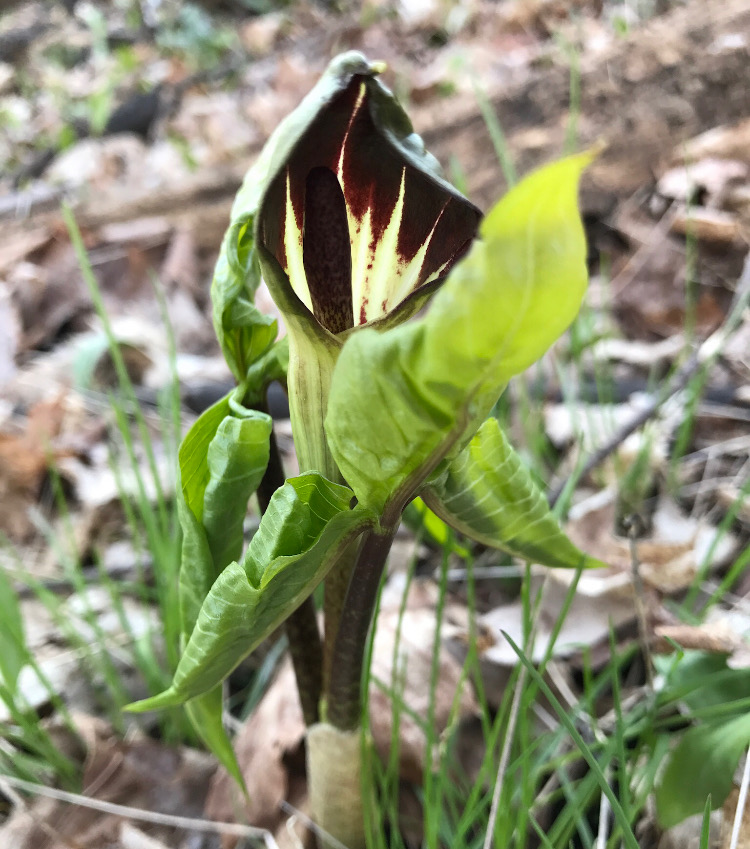 9. Jack-in-the pulpit. Coming soon. Captivating and elegant, resembles a pitcher plant. A maroon-striped hood covers a spadix — the “jack.” Of course Georgia O’Keefe painted these. They have a certain — let’s say “Freudian” — symbolism.
9. Jack-in-the pulpit. Coming soon. Captivating and elegant, resembles a pitcher plant. A maroon-striped hood covers a spadix — the “jack.” Of course Georgia O’Keefe painted these. They have a certain — let’s say “Freudian” — symbolism.
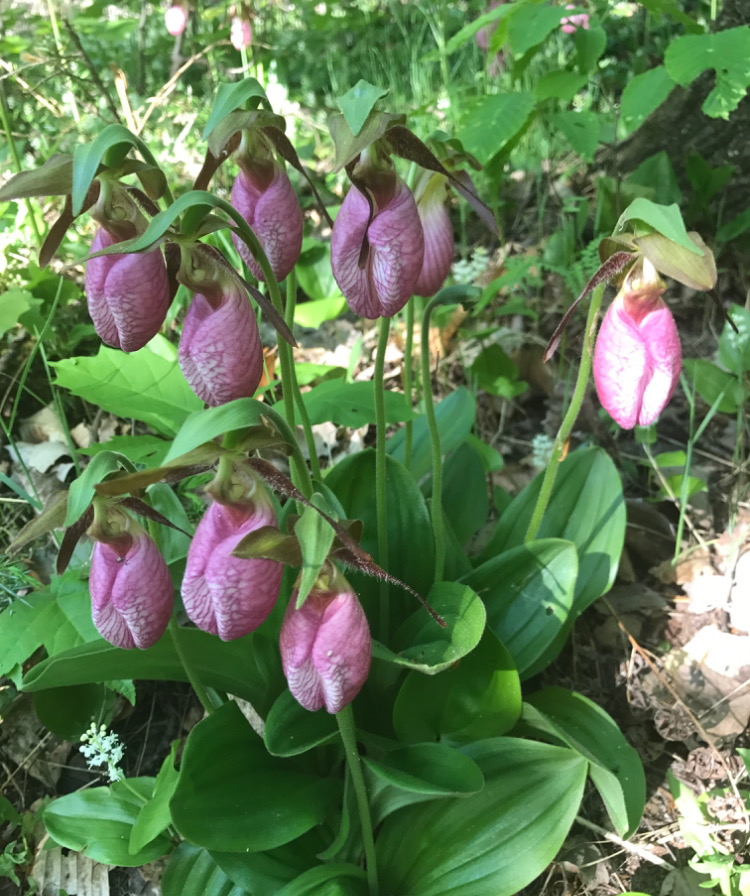 10. Lady’s slipper’s*. Also coming soon. I lied: these are my favorite. Who knew ravishing pink orchids thrived in the north woods? They look like they belong in a jungle. A sort of femme fatale, their bright color and sweet scent tricks bees into thinking they contain nectar. The bee enters through the folds and is trapped. A narrow exit forces the bee to deposit pollen from other flowers and collect fresh pollen.
10. Lady’s slipper’s*. Also coming soon. I lied: these are my favorite. Who knew ravishing pink orchids thrived in the north woods? They look like they belong in a jungle. A sort of femme fatale, their bright color and sweet scent tricks bees into thinking they contain nectar. The bee enters through the folds and is trapped. A narrow exit forces the bee to deposit pollen from other flowers and collect fresh pollen.
*Please note that picking or moving certain wildflowers, such as trillium or lady’s slippers, is illegal. Look but don’t touch. And besides, trying to capture a flower defeats the point, doesn’t it? Remember, the greatest lesson flowers have to teach us is that life is ephemeral and you can’t take it with you.
